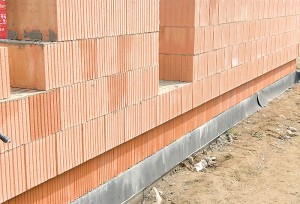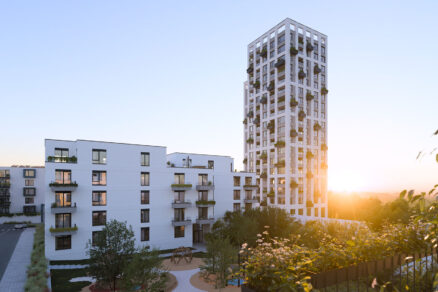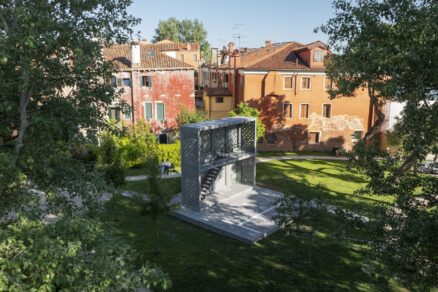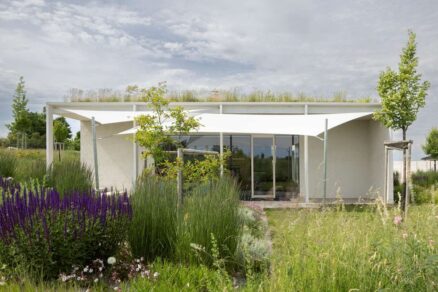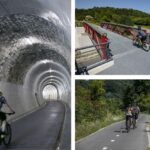
Today all bridges are part of my life
“When I walk over them I recall many of the problems we faced during their construction and the solutions to resolve them. It is very satisfying to know that I made a significant contribution to their construction,” explains Ing. Ľubomír Hrnčiar when commenting on his professional career. The bridges have truly become ingrained in him.
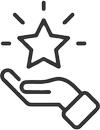 |
Poznáte výhody Klubu ASB? Stačí bezplatná registrácia a získate sektorové analýzy slovenského stavebníctva s rebríčkami firiem ⟶ |
1970 – 1974 construction of the New Bridge (Nový most) in Bratislava (construction manager, Doprastav)
1974 – 1977 reconstruction of the streets Pražská and Brnianska in Bratislava (construction manager, Doprastav)
1977 – 1979 construction of the interchange and the underpass on the Mierovo square in Bratislava (construction manager, Doprastav)
1979 – 1985 construction of the Harbour bridge (Prístavný most) over the river Danube in Bratislava (the main construction engineer, Doprastav)
1985 – 1986 construction of the Lafranconi Bridge in Bratislava (the main construction engineer, Doprastav)
1991 – 1992 Water works Čuňovo (project manager, Doprastav)
1993 – 1994 construction of the Murgbrücke Bridge (project manager, Doprastav)
1986 – 1990 technical director of division 1, Doprastav
1990 – 1994 production director of division 1, Doprastav
From 1993 a member of the Slovak FIB committee, at that time an establishing member, a representative of Doprastav
1994 – 2007 technical-commercial director of division 5, Doprastav
1998 – 2004 a representative of the Slovak Republic in the FIB General Assembly
2007 – 2009 an expert consultant for the bridge structures, Doprastav
2009 – 2010 technical director for PPP projects, Váhostav-SK
2010 – 2013 technical director, Váhostav-SK
2013 – 2014 audit consulting, Váhostav-SK, Artur D. Little GmbH
From 2014 technical director, Váhostav-SK

You studied Structures and Transportation Engineering at the Faculty of Civil Engineering, Slovak University of Technology in Bratislava. What was your reasoning behind choosing such a difficult department of study? Currently there are very few of the younger generation who decide to take the same path.
Ever since I was a young boy my interests lay in music, history and reading books. In my final year before the upper secondary school examinations I intended to go to university to study archaeology. I could also go on to study at the School of Music in Žilina, however I wanted to keep music as my hobby. Then I found out that the School of Archaeology in Bratislava was not planning to admit any new students that year. My father took a rational viewpoint – he explained to me that my admission to the School of Archaeology was highly unlikely even later on and that it would be better to choose something more practical, namely in the construction field, because it would always be perspective.
Moreover, at that time my older brother was already studying at the Slovak University of Technology in Bratislava, so I could count on his support in case I needed it. After a short time reconsidering I agreed to switch with the condition that I would study nothing else but bridges or roads. Thus I found myself at the Department of Structures and Transportation Engineering. The interesting aspect of this department was that after 5 and half year-long study we were around 100 students who graduated, which was about the same amount as at the beginning, although only a half of them were the students who actually started with me, the other half were the students who gradually joined in from the upper grades.
That just proved the fact that it was one of the most demanding studies at the Faculty of Civil Engineering. This, of course, has not changed until this very day, which, I believe, explains why there are so few young people willing to enrol to study this department.
The topic of your postgraduate study was the design and technology of concrete bridges. Was that a natural development of your intention to specialise mainly in bridges?
In 1970 I completed my studies at the Slovak University of Technology and on 1st November of that same year I started working in Doprastav. I was very fortunate to be assigned to a just commencing construction of the Bridge SNP. That experience was like my second university. At those times the faculties of civil engineering taught predominantly the theory and here I was literally thrown into deep waters of this real and very special construction project.

Although I was only a beginner, I was eagerly watching and absorbing everything around. As a construction manager of certain part of the works I was given some responsibilities – for special foundation on the left side of the river Danube, for piers and for large interceptors. In any case it has been a valuable experience which is not frequently encountered by a fresh graduate. And so, such a great construction project as the Bridge SNP has unexpectedly become the very first bridge of my career.
In 1975 there was a selection process for a postgraduate study of design and technology of concrete bridges. Due to the experience from the construction of the first bridge on the river Danube in Bratislava, the company appointed me and my three other colleagues. Enthusiastically we studied for the next two years and completed the postgraduate programme with diploma thesis and state examination. It was not an easy programme to study. In terms of the topic of my diploma thesis, I was directed by the company to focus on the Harbour bridge (Prístavný most).
Back then it was officially called the motorway-railway bridge, which concerned the movable scaffolding construction method. I had already encountered this technology in 1969 while I was on the student working experience in Germany, but still it was a huge challenge for me. Another important factor was that the government approved the investments into the new technology of movable scaffolding. Thus in 1977, just after I completed the post-graduate programme, the construction of the Harbour bridge commenced.
I was sent for an internship to Austria and Germany to gain further experience from the construction projects where the movable scaffolding had been used. Once the licence was purchased, it was very advantageous that we kept in touch with our foreign partners – we were meeting once a year in Slovakia at the review of our construction sites, and once a year in Germany at the approval of proposed projects and technological solutions.
The mutual professional cooperation with our licensing partner had grown into a phase where, during one interesting operation – rotating of a movable scaffolding of 450 tons on the embankment by horizontal hydraulic jacks, Mr. Hans Wittfoht, a president of the fip and a technical director of a company with a 100-years-long tradition, came personally to take pictures of this operation and to have the whole procedure explained in detail. In other words it was an amazing form of further education, and today I can say with certainty that we have to learn all our life to maintain our professional growth.
The bridges have accompanied you throughout your entire professional career, what do these structures mean for you?
Thanks to my experience from the construction of the Bridge SNP, my postgraduate degree concerning the bridges, and also because I took part in a vast number of meetings and discussions with our licencing partner, I was offered a position of the main engineer of the construction administration for the above mentioned motorway-railway bridge. I was rather surprised as I was still very young and with no more than 9 years of professional experience, yet very exceptional experience, which probably tipped the scales in my favour. Another thing was that many others had feared of the new construction project, I did not, probably because I was too young and not quite realising what I was going into…
Most importantly, I was chosen by a senior engineer, who had experience with the motorway construction, so I felt I had sufficient support behind me, which also encouraged me to accept the offered position. Although the project manager specialised in roads and did not have much knowledge nor experience with construction of bridges, he had huge experience with works organisation and fluency of construction. All that came very handy because the construction in question comprised a double-deck motorway-railway bridge, quite unusual in our country, with several restrictions concerning the bridge clearance height, the proximity to the airport, etc., therefore, the bridge bearing structure required to be custom-made. Even more important was the application of as many as seven different bridge construction technologies, which really was an organisational challenge.
At the beginning it was very difficult and we did not get the works going properly until after the first two years, but eventually we learned how to motivate people to work efficiently. We even managed to generate a time reserve. The critical point at the beginning was also the launching of the bridge spans which caused us to fall behind the schedule. Then followed a decision to make people work night-shifts, which led to a catastrophe at first. Finally, we managed to organise workers and the construction works took a faster spin. Nowadays, I still benefit from the fact that back then I learned how much time is needed for each particular activity and what equipment is required for its satisfactory performance.
This “route” of mine then opened the doors for me and ever since I was being called to assist with the preparation of all bridges with over 60m spans in the west and the central Slovakia, which at those times fell under the competence of Doprastav.
All those bridges form part of my professional life today. When I walk over them I recall the problems we faced during their construction and the way how we resolved them. Constructors are always under pressure caused by the weather, deadlines and constant changes in organisation. The only day when they receive appreciation is the day when the completed works are handed over. In spite of that it truly is a wonderful feeling to know that I contributed to their construction. I deliberately say “I contributed”, because behind each bridge there always is a huge group of people, who cannot be forgotten. Many of them are not with us anymore, many have left to go elsewhere, but the results of their work will remain here forever.
After the completion of the Harbour Bridge, there were two key outcomes important for my future. One of them was the option to travel abroad to attend the world bridge congress, which was rather unusual in the given political and financial circumstances, and to me professionally invaluable. On the way to the congress I was talking to Mr. Zvara – I knew that in the unsettled year of 1969 he had worked in Germany – so I asked him if he had not been thinking about staying there to live. He said he had not because he had his family in Slovakia and then he asked me an unforgettable question – whether I thought that I could build there the bridges that I had already built in Slovakia. He was right.
In Slovakia I had the opportunity to participate in the construction of three amazing bridges over the river Danube, later even on the fourth one on Košická Street. If I look at it from today´s perspective, there are only three of us still alive who contributed to the construction of these three historical Danube bridges, and I am the last one who continues to be professionally active.
Nonetheless, at the above mentioned congress I decided to try to bring home some of the learned “world´s” experiences and enrich Doprastav, where I was already a technical director at that time. I did my best to get finances for introduction of various new technologies and some of my efforts did work out and made us the first company in Slovakia to put them into practice in our country.
Another significant matter was the ongoing preparation of the Lafranconi Bridge. It started right after the completion of the Harbour Bridge, and this one I was preparing alone with the designer. Problematic was the Austrian side of the construction, which was unapproachable to us. However, Dopravoprojekt, a construction design company, had an older generation of very skilled and experienced designers, and one of them, Mr. Ševčík, was in charge of the Lafranconi Bridge design preparation.
He explained to me the construction of one bridge in Washington described in a professional journal and he asked me straight away if I would be willing to do something similar. I confirmed that I would. It was extremely exciting. During the actual construction of the bridge, where I was the main engineer, we used a lot of the latest components and technologies. It was attainable also thanks to the enthusiasm of people working in the development department of Doprastav.

Out of all the unique enhancements that we achieved I would like to mention the asymmetrical cantilever with the length of 120m, which was the first one done in Europe, today is still the one of a kind in Slovakia and Czech Republic, getting close to the world-wide parameters of 125m. We were also the first in the world to use the unbounded tendons with the free cantilever technology for the spans of 175m. Another challenge was to connect the symmetrical and the asymmetrical cantilever. We certainly had many issues to resolve.
Consequently to all the success we gained during the construction, I was given an authorisation to purchase the license for free cantilever method of construction. For this purpose I travelled to commence the negotiations in Norway, where I learned much once again. The Norwegians were world leaders not only in terms of the free cantilever method but also concerning the production of concrete, because at those times they specialised in construction of floating platforms for the crude oil output.
Up until 2009 all your activities were performed under the leadership of Doprastav. Since 1970 you must have gone through much, not excluding the turbulent 90´s and the resulting changes. How would you summarise this long period of time?
In the 1990´s investment in major construction was stopped and Doprastav was struggling to survive – it was probably the most difficult period of my professional life. At that time I was a production director of division 1, which meant that I was responsible for around 1,300 employees. Of course, a lack of work lead to collective redundancies, which decimated the number of workers to only 700 people.
Those times were really tough. Unfortunately this trend continued even after the establishment of the joint stock company, seven divisions were reduced to four and the redundancies did not stop. On one hand we were forced to part with many of our highly qualified professionals and on the other hand we had to take on board workers from other divisions. The entire process did finally stop at the number of 450 employees. At the same time we had no other choice but to search for work abroad. Back then I was a production director, later a commercial-technical director.
Through an exhausting process of tendering we were finally awarded a contract in Germany for the execution of some civil engineering structures. Gradually we built our name in the German market, and later we managed to succeed with a bid which we had submitted together with another German company for the reconstruction of a bridge between Strasburg and Stuttgart. Construction period was four years and although our part was only to provide the workforce and technicians, it helped us to survive the worst times before the construction industry in Slovakia was finally rebooted in 1995.
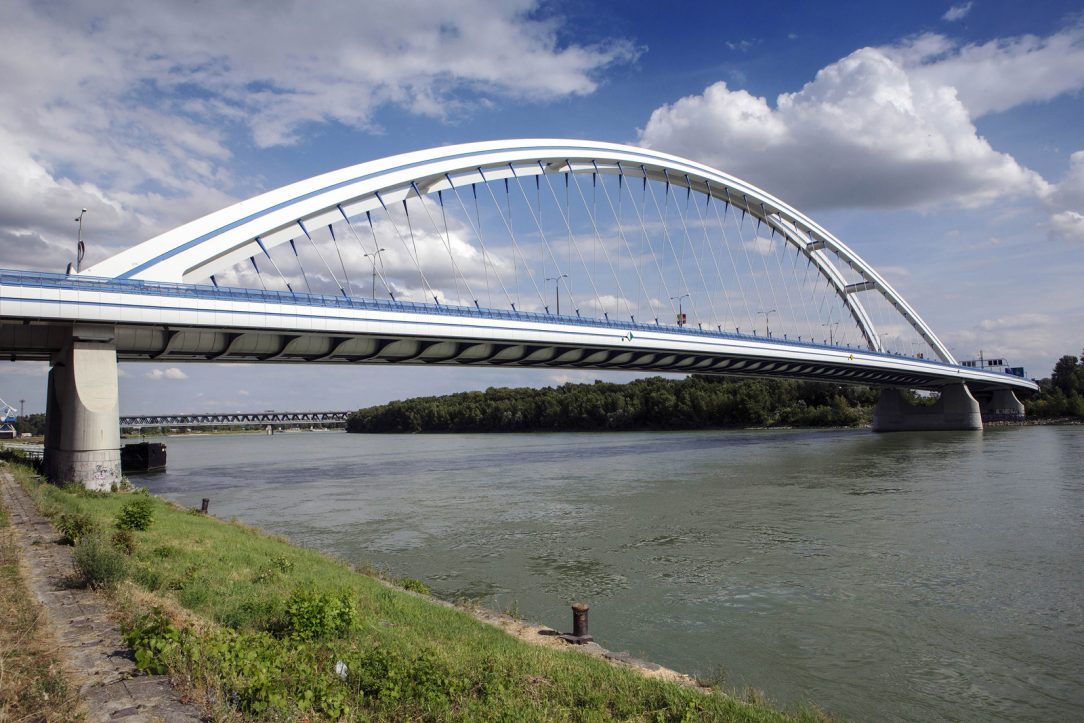
You contributed to the preparation of the PPP projects, what is your experience in this field?
The preparation of the PPP projects kicked off in 2007 – due to my experience and my ability to communicate in English I was one of the representatives authorised to act on behalf of Doprastav. It concerned the first package of three PPP projects, on which we worked together with several foreign companies and one Slovakian – Váhostav. An enormous joint venture was created, within which we spent two years preparing three bids.
We finally won the first PPP project although its execution commenced as second, after the bypass of Nitra. Nevertheless, the cooperation with foreign companies proved itself to be a great education for we could see a different perspective of many operations, especially concerning the financial background and the related circumstances. Although at first it was quite evident that they looked down at us, after a year or so we gained their full confidence.
This resulted in another turning point of my career. In 2009 I reached retirement age and in connection to that I did not see much sense in my further stay in Doprastav. But then a job offer came from Váhostav to take the charge of PPP projects on their behalf. Thus my role within the joint venture did not change, I was only representing a different company.
Unfortunately, in 2010 the PPP projects were stopped and I became a technical director of Váhostav. This company had always been focusing on a different type of construction and now they were keen to use my knowledge and experience to expand their portfolio and advance their technological level. Quite unexpectedly, as a fresh pensioner I was confronted again with an ambition to progress and improvement, which I did appreciate after all because those amazing early years in Doprastav had been irretrievably gone. And so the route to my personal growth and self-fulfilment was re-opened.
You have been working in the construction field for the last 50 years. Have you ever regretted that you have dedicated your life to this particular profession? What do those decades mean for you?
I do not tend to look back to the past, because to me the past is more a source of knowledge. The present is an instant status and the future is something that I am preparing for. Nonetheless, every evening I revise what has happened that day and what needs to be done the following day. To prevent myself from being totally overwhelmed with work, as I am quite prone to be, I used to do sport quite a lot when I was younger. Now I prefer to spend my spare time with a magazine, a book and mainly listening to music, especially from the 60´s. Recently, I mostly prefer classical music.
However, not to completely avoid the given question – I have never regretted joining this profession, nor have I regretted any decision I made in the scope of it. Although not all of them were correct, they were made in a particular context and I could learn my lessons from them. A mistake can be made once, but afterwards it should not be repeated. I also believe that one should always look for a way to get things done and not for an excuse as to why they cannot be done.
Thus I do not regret anything, quite the opposite, as I already said, it always is a blissful feeling to go somewhere, where I have left a piece of my work behind me.
Over the time a lot has changed (not only) in the construction field, how do you perceive this progress? What is it that makes you pleased about it, and, on the other side, what it is that disappoints you?
Well, 47 years in any field implies undeniably an enormous difference between how things were at the beginning and how they are now. Back then we did not know a system formwork, hydraulic cranes or
a concrete pump. We did not even dream of modern technologies, which are really incredible. A few years ago in Váhostav we managed to contribute to that by developing a new recipe of concrete class 95, tested on the footbridge in Sučany.
There have been many changes and that makes me pleased. What upsets me is the decline in interest of the next generations to study this construction field – as we discussed earlier. Another thing is that the students are not as well prepared as they were in the past. We had to know exactly what we were drawing. Nowadays there are computer programmes that resolve many things automatically, yet in a way they avert the thinking, creativity and further development. Computer programmes are a good servant but a bad master – their help is enormous, but there is also another side to them, which ought to be considered more often.
What plans do you have ahead of you? What would you wish for yourself and the construction sector in the upcoming years?
My personal plans will depend on whether I will continue to work in Váhostav, or not, and I will adjust accordingly. What do I wish for the construction sector? That is the most important question. I wish it had some continuity in planning, in other words, to avoid what we see so often, that something is planned, then the plan is not adhered to, then nothing is happening at all, and finally everything has to happen at once and immediately, and in order to do so the foreign companies must be called in. The last Slovak construction companies that have remained in the Slovak market are only Doprastav and Váhostav. Otherwise there is just foreign capital of companies which have a strong background abroad and these ups and downs do not cause them to shake, yet they have devastating effects on our companies.
I would also wish that it was not only the lowest price that is decisive in the bid selection procedure. This often results in price dumping. Apart from the price a significant weight should be consigned to the level of professional experience, which can be declared. Even in Romania the price is given only a 50 per cent importance in the tender evaluation.
Finally, I do have one personal wish – to stay healthy, so that I can see many other beautiful structures and grasp new experiences and further knowledge. In fact, I wish this to all construction engineers.
Our profile of Ing. Ľubomír Hrnčiar is produced as a commemoration of his successful professional career on the occasion of his 70th birthday. Although with a little delay, we would like to join the crowd of well-wishers, and we also attach the greetings from the Slovak National fib Committee, in particular its president doc. Ing. Milan Chandoga, PhD.:
“Ing. Ľubomír Hrnčiar is one of the founders of the Slovak FIB (now fib) Committee, which will celebrate its 25th anniversary in the upcoming year. Between 1998 and 2004, when Ing. Ivan Šesták, then the CEO of Doprastav, a.s., was the president of the Slovak FIB Committee, Ing. Hrnčiar was in charge of his agenda and represented him on several meetings of the FIB General Assembly abroad. He was a member of scientific and organisational boards of nearly all national conferences and post-congress colloquies of the Slovak fib Committee. He remains to be a regular contributor and presenter of technical articles at these conferences. He also publishes his articles in the magazine The Civil Engineering Structures. In xxx he was awarded a medal for his long-standing active work for the Slovak fib Committee.
What needs to be particularly pointed out is his life-long passion for new technologies and materials usable in the construction of concrete bridges. The knowledge he gained through studying of technical
documents and attending the international congresses and conferences, he has always attempted to apply into practice of both companies for which he was/has been working.
My professional cooperation with Ing. Hrnčiar commenced at the time of the Lafranconi Bridge construction. Together with doc. Zvara, we were resolving some construction issues for Doprastav, amongst others also construction of unbounded tendons and production of the first Slovak cables MONOSTRAND. After 1989 our cooperation continued concerning several bridge projects. On his instigation, in years 1993 -1994, I developed and put in production the anchoring system PROJSTAR-CH, which substituted the outdated system MONOS.
On behalf of the Slovak National fib Committee I wish to Ing. Hrnčiar strong health and a lot of success at work. May his passion for bridges never diminish!










